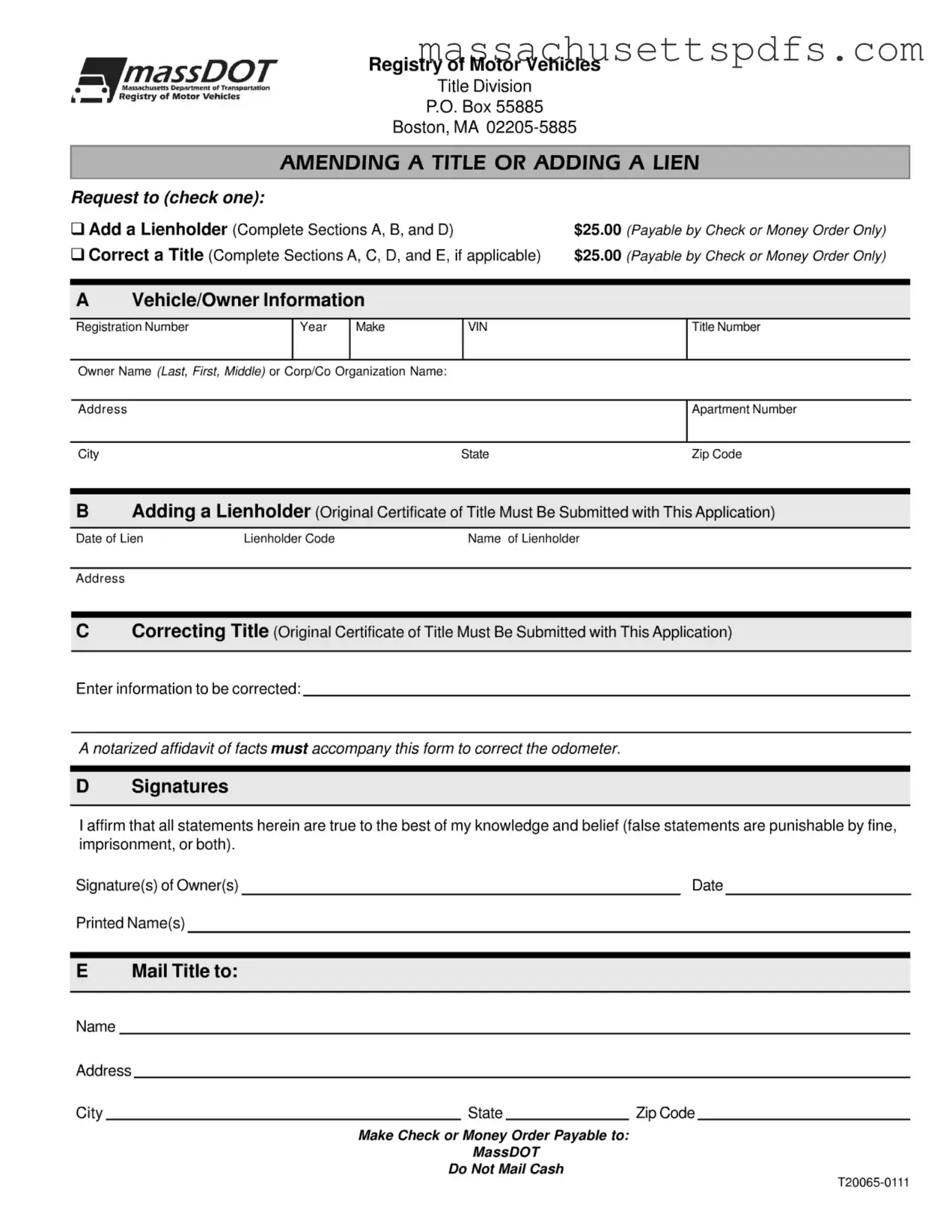Official Massachusetts Lien Template
The Massachusetts Lien form is a legal document used to add a lienholder to a vehicle title or to correct information on an existing title. This form requires specific information about the vehicle and the lienholder, and it must be submitted along with the original certificate of title. To ensure proper processing, individuals should complete the necessary sections and submit payment as outlined in the form.
To fill out the Massachusetts Lien form, click the button below.
Launch Editor Here
